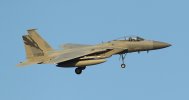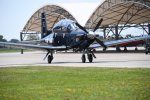Weapon release clearance when carrying 6 pylons.
It took me many hours of searching, but I did actually find the original MacAir source document (circa 1993 or 1995) that recommended the cant. IIRC (its been a couple years since I read it), it was specific to mid board Mk-83 release with a HARM on the adjacent (outboard) station. What I have heard is that this configuration ended up not causing the wind tunnel predicted release issues. Classic



